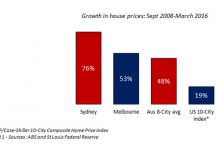The biggest single structural defect facing the US economy night now is the widening gap between rich and poor. This is forcing the alleged reformer – Barack Obama – to reshape the U.S. economy thus leaving it more vulnerable to recurring financial crises and less likely to generate enduring expansions.
My business partner, Paul Gambles, recently debated this point on CNBC with Eric Rosenkranz – http://video.cnbc.com/gallery/?video= 3000056592
Issues like record levels of debt, spiraling federal deficits, and chronic lack of velocity in money circulation are all symptoms of the same disease.
“Income inequality in this country is just getting worse and worse and worse,” James Chanos, told Bloomberg Radio recently. “And that is not a recipe for stable economic growth when the rich are getting richer and everybody else is being left behind.”
We have been beating this drum a while and we would thank GMO’s Jeremy Grantham for waking us up to this.
Since 1980, about 5% of US annual national income has shifted from the middle class to the nation’s richest households. That means the wealthiest 5,934 households last year enjoyed an additional $650 billion – about $109 million each – beyond what they would have had if the economic pie had been divided as it was in 1980 (U.S. Census Bureau).
Between 1993 and 2008, the top 1 percent of families captured 52 percent of total income gains, according to a 2010 analysis of Internal Revenue Service tax data by economist Emmanuel Saez of the University of California, Berkeley.
Disputes over what constitutes economic fairness are moving to center stage amid a near-stagnant U.S. economy saddled with 8.6 percent unemployment yet boasting record corporate profits. President Obama last month targeted, “the wealthiest tax payers and biggest corporations” for higher taxes, saying they should pay “their fair share” – Bloomberg.
Of course Republicans, led by John Boehner, elected on a pledge to oppose all tax hikes, whether they are good or bad, sensible or stupid, see any suggestions of increases as being unacceptable. They are probably hoping that the wealthiest 5,934 households exert an influence disproportionate to the actual quantum of votes that they themselves wield when it comes to the polls.
A lot of the anger over this banana republic income dispersion fuels the likes of ‘Occupy Wall Street’ and statements like, “We are the 99 percent that will no longer tolerate the greed and corruption of the 1 percent,” – www.occupywallstreet.org.
Tax reforms
Howard Buffett, the Berkshire Hathaway Inc. director sympathizes with this anger. Buffett Junior recently told Bloomberg News: “There has never been such a large gap between earnings in this country… There has never been a time in my lifetime when the government is going to cut an incredible amount of programs that support poor people and feed them.”
Almost half Americans now see their country divided between “haves” and “have-nots,” according to a Pew Research Center poll last month.
Growing Gap
“The large and growing gap between the haves and have-nots will tend to undermine growth, both directly and indirectly – including by reducing the marginal propensity to consume and by amplifying the political polarization that has already contributed to poor economic policymaking,” – PIMCO, CEO: Mohamed El – Erian.
To us this is the central issue right now. It is not a specifically American problem, although much of the data and available commentary focuses on the Banana States of America. It is also very easy to see the evolution of the gap in America. Following WW II, the country unified around a program of building post-war prosperity in the 1950s. This was so successful that the 1960’s saw radical social change and moves to greater equality encapsulated by the promise of a “grand society”.
When times became tougher in the 1970’s, the focus on distribution of the spoils once again moved to the fore, setting the stage for what we have long highlighted as Art Laffer’s role.
Since 1968, according to the standard statistical measure of inequality know as the Gini coefficient, incomes in the U.S. have become steadily distributed less equally. The U.S. Gini score rose from .39 in 1968 to .47 in 2010, meaning that incomes were becoming increasingly unequal.
Bloomberg points out that in the 30-nation Organization for Economic Cooperation and Development, only Turkey and Mexico have more unequal societies than the United States. In the U.S., the rich-poor gap has widened by 20 percent since the mid-1980s – more than in most developed countries. “Nowhere has this trend been so stark as in the United States,” the OECD concluded in a 2008 study.
To be continued…
| The above data and research was compiled from sources believed to be reliable. However, neither MBMG International Ltd nor its officers can accept any liability for any errors or omissions in the above article nor bear any responsibility for any losses achieved as a result of any actions taken or not taken as a consequence of reading the above article. For more information please contact Graham Macdonald on [email protected] |




